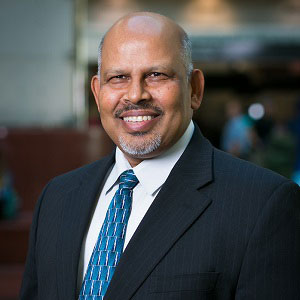OPINION: Why leadership education in digital is the missing link
Posted: 8 April 2025 | Ian Betteridge | No comments yet
Airport digitalisation demands strategic vision from leaders who understand both the capabilities and limitations of advanced technologies.


In the rush to digitalise airport operations, a critical factor is frequently overlooked: the digital literacy of those making the investment decisions. While airport operators worldwide allocate substantial budgets to AI, automation and digital systems, many C-suite executives lack the fundamental understanding needed to guide these transformations effectively. This disconnect between leadership knowledge and technological implementation is creating a hidden barrier to digital success in aviation.
This was a point made by Leo Chen, Huawei’s Corporate Senior Vice President and President of Enterprise Sales at Mobile World Congress 2025 when he talked about the four key pathways the company believes are essential to accelerating what it calls ‘intelligent transformation’. Training ICT talent doesn’t just involve the most junior employees – executives need to be able to make decisions about AI, big data and more, and that requires understanding the issues. Huawei’s solution – and one it showcased at Passenger Terminal Expo this year – is the “Industry Elites in the ICT Classroom” project, designed to help those making key decisions understand all the issues.
The leadership knowledge gap
Airport digitalisation requires more than procurement of advanced technologies; it demands strategic vision from leaders who understand both the capabilities and limitations of these systems. Yet across the sector, a troubling pattern has emerged: significant investments approved by executives who possess limited technical understanding of what they’re buying.
This knowledge gap can create cascading problems:
- Strategic misalignment between digital investments and business needs
- Unrealistic expectations of technology capabilities and implementation timelines
- Poor prioritisation of competing digital initiatives
- Inadequate allocation of resources for staff training and change management
- Limited ability to challenge vendor claims and promises.
Beyond digital delegation
The traditional approach of delegating digital matters entirely to IT departments has worked in the past, but the rapid advancement of technologies like AI calls into question whether it’s the right approach for now. As digital technology becomes fundamental to every aspect of airport operations—from passenger processing to baggage handling, security, retail operations and gate management—technical understanding must extend into the boardroom.
Redefining C-suite digital competency
Airport sector leadership requires a redefinition of executive competencies for the digital age. The profile of an effective airport executive now must include:
- Understanding of fundamental AI and automation principles
- Data literacy and basic analytics comprehension
- Awareness of cybersecurity threats and governance requirements
- Knowledge of digital implementation challenges and change management approaches
- Familiarity with agile project methodologies
Progressive airports are addressing this by creating structured learning pathways for their leadership teams. These typically combine formal education, hands-on workshops with technical teams, guided site visits to digitally advanced facilities, and regular technical briefings with simplified explanations of complex concepts.
Creating technical translators
One emerging approach is the development of “technical translators”—professionals who bridge the gap between technical specialists and executive decision makers. These individuals possess both deep technical knowledge and the communication skills to explain complex concepts in business terms.
This model acknowledges a reality: not every C-suite executive will become a technical expert. However, with appropriate support structures, they can make informed decisions without complete technical mastery.
The wider skills crisis
While leadership education represents the most urgent challenge, it exists alongside a broader skills shortage throughout airport operations. The digitalisation journey requires technical talent at multiple levels:
- Data scientists to develop predictive models for passenger flows and resource allocation
- Systems integration specialists to connect disparate airport systems
- UI/UX designers to create intuitive interfaces for staff and passengers
- Automation engineers to implement and maintain robotic systems
- Cyber-security specialists to protect increasingly connected infrastructure
These skills are in short supply globally, with airports competing against higher-paying tech companies and other sectors for limited talent. Industry experts suggest that airports need to address this through multiple approaches:
- Creating clearer career pathways for technically skilled staff
- Developing partnerships with academic institutions
- Implementing internal upskilling programmes for existing staff
- Exploring shared talent pools across airport networks.
The path forward
For airports seeking to address leadership digital education, several strategic approaches stand out:
- Mandatory digital literacy programmes for all executives, tailored to their specific roles and responsibilities
- Immersive learning experiences where executives work alongside technical teams to understand challenges firsthand
- Reverse mentoring programmes pairing technically skilled younger staff with experienced operational leaders
- Regular technology demonstrations with simplified explanations of capabilities and limitations
- Cross-industry learning exchanges with digital leaders from other sectors, including through programmes like Hauwei’s.
Above all, airports must recognise that digital transformation is fundamentally about cultural and organisational change, enabled by technology rather than driven by it. Without educated leadership guiding this change, even the most sophisticated digital systems will fail to deliver their promised value.
As the sector continues its digital evolution, the airports that thrive will be those that invest not just in technology, but in the human capital—especially at leadership level—needed to leverage that technology effectively.
The most successful digital transformations will be those guided by leaders who understand not just where they want their airports to go, but how digital technology can realistically help them get there.
Related topics
Airport leadership, Artificial intelligence (AI), Digital transformation, Innovation, New technologies, Workforce


















